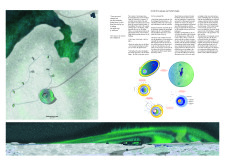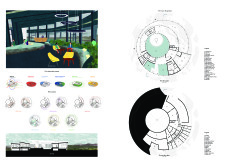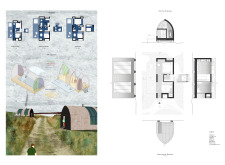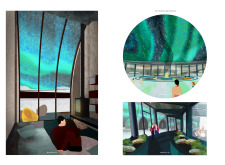5 key facts about this project
The functional aspect of this project is key, as it addresses specific requirements while allowing for flexible use of the space. The layout is carefully orchestrated, ensuring that each area serves its intended purpose efficiently without compromising the overall flow. The thoughtful arrangement of zones facilitates movement and encourages engagement among users. For example, public areas are designed to be welcoming and accessible, while private spaces are laid out for comfort and contemplation.
In terms of materiality, the project utilizes a carefully considered palette that speaks to both durability and sustainability. Materials are chosen not only for their structural properties but also for their ability to convey a certain atmosphere. The use of locally sourced stone, for instance, grounds the project in its geographic context, while large expanses of glass create visual transparency and bring natural light into the interior spaces. This interplay of materials enhances the sensory experience within the architecture, promoting a dialogue between the indoors and outdoors.
The architectural design employs unique strategies that challenge conventional approaches while respecting the environment. For example, the incorporation of green roofing systems not only contributes to energy efficiency but also integrates vegetation into the urban landscape. This not only serves functional purposes like insulation and stormwater management but also provides ecological benefits, enhancing urban biodiversity. Additionally, passive design elements are woven throughout the project, maximizing natural ventilation and daylighting to reduce reliance on mechanical systems.
Every important detail within the design has been crafted with precision, from the scale of windows that frame picturesque views to the textures introduced through cladding materials. The intersection of different architectural elements creates a layered complexity, inviting closer examination from visitors. Unique features, such as customized fixtures and creative landscaping, further enrich the project, creating an overall sense of coherence and intentionality.
The architectural ideas presented in this project reveal a commitment to sustainability and user-centered design. By prioritizing these ideals, the project sets a benchmark for future developments in the region, demonstrating how architecture can thoughtfully engage with its context. Investors, community members, and stakeholders are encouraged to consider how such projects could redefine expectations and serve as a catalyst for positive change.
To explore further, viewers are invited to delve into the architectural plans and sections that depict these concepts in greater depth. Detailed architectural designs and insights into the project's underlying architectural ideas can enrich understanding of how these thoughtful choices come together to form a cohesive narrative. By examining these facets, one can appreciate the intricate connections that underpin this architectural endeavor and its significance within the broader community context.


























